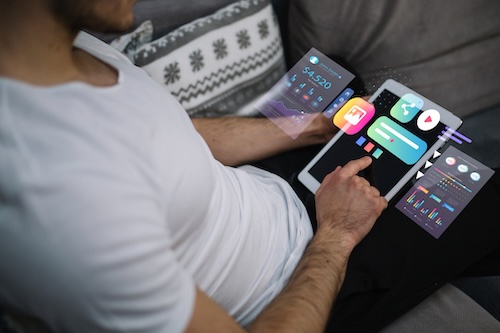In today’s fast-paced digital landscape, brands rely heavily on influencers to reach targeted audiences, boost engagement, and drive sales. However, this partnership comes with inherent risks from controversial social media posts to undisclosed sponsorships that violate advertising guidelines. That’s where influencer vetting becomes crucial.
Traditionally, brands have relied on manual vetting processes to evaluate potential partners. But in 2025, with the rise of AI-driven tools and automated influencer screening powered by advanced APIs, the dynamics of influencer selection are rapidly changing. Modern technology allows brands to instantly screen influencer profiles, detect brand safety risks, and uncover hidden audience insights, offering a far greater return on investment (ROI) compared to traditional methods.
In this blog, we’ll explore the key differences between automated influencer screening and manual vetting, how each impacts brand safety, and why automation delivers superior ROI for modern marketing teams. We’ll also highlight how tools like GetPhyllo’s Influencer Vetting for Brand Safety, Social Screening, and Social Listening API can make influencer partnerships smarter and safer.
Understanding Influencer Vetting in 2025
Influencer vetting is the process of assessing an influencer’s profile, audience, and content to ensure alignment with a brand’s values, objectives, and compliance standards.
In 2025, the influencer market is expected to reach $24 billion globally, according to Influencer Marketing Hub. With such rapid growth, brands cannot afford to make vetting mistakes that could lead to reputational damage or wasted ad spend.
Why vetting matters more than ever
- Brand safety risks are rising: Influencers’ online behavior is constantly under public scrutiny, and a single misstep can go viral.
- Regulatory compliance: Advertising standards now require clear disclosures, making vetting for compliance critical.
- Audience authenticity: Fake followers, engagement fraud, and bot activity can distort influencer value.
- Cultural sensitivity: Brands must avoid influencers whose past or present content might be perceived as offensive.
Manual Vetting: The Traditional Approach
Manual vetting has long been the go-to method for brands, especially smaller ones without access to advanced tools.
In this process, brand managers or agencies review influencers’ social media content, follower lists, engagement metrics, and past brand collaborations — often by scrolling through feeds, checking comments, and searching news coverage.
Advantages of manual vetting
- Human intuition: Marketers can assess tone, personality, and subtle brand fit.
- Customizable process: Brands can tailor vetting steps based on specific campaign needs.
- Low initial cost: No investment in software is required for small-scale vetting.
Limitations of manual vetting
- Time-consuming: Reviewing content for multiple influencers can take hours or days.
- Prone to bias: Human reviewers may overlook subtle red flags or be influenced by personal preference.
- Scalability issues: As campaigns grow, manual vetting becomes impractical.
- Inconsistent results: Different reviewers may apply different criteria.
Automated Influencer Screening: The Technology-Driven Method
Automated influencer screening uses AI, machine learning, and social media APIs to evaluate influencer profiles in real time.
Tools like GetPhyllo’s Influencer Vetting for Brand Safety analyze posts, comments, audience demographics, and engagement quality to detect potential risks. This automation allows brands to screen hundreds of influencers in minutes, not days.
Key features of automated screening
- API-powered profile scanning: Connects directly to social media platforms to pull verified influencer data.
- Content analysis: Detects inappropriate language, sensitive topics, or controversial imagery.
- Audience quality checks: Flags suspicious spikes in followers or engagement.
- Historical insights: Reviews years of past content instantly.
- Real-time alerts: Notifies brands when an influencer’s new post poses a potential risk.
Automated vs Manual Vetting: Side-by-Side Comparison
The ROI Impact: Why Automation Wins
ROI in influencer marketing is determined not just by campaign results, but also by the efficiency of operations and the avoidance of costly mistakes.
By eliminating time-intensive manual work and reducing the risk of partnering with the wrong influencer, automation delivers measurable value.
ROI benefits of automated screening
- Faster campaign launches: Shortened vetting timelines mean brands can seize trends quicker.
- Lower risk of PR crises: Automated tools spot red flags early, avoiding brand damage.
- Better budget allocation: Identifies high-quality influencers, ensuring better returns per dollar spent.
- Improved compliance: Reduces the chance of regulatory fines.
Real-World Example: Scaling from 10 to 500 Influencers
Imagine a brand working with 10 influencers manually versus 500 influencers through automation.
Automation not only saves money but also enables campaigns at a scale that manual processes simply cannot handle.
Integrating Social Media APIs for Better Vetting
One of the biggest advantages of automated screening is its integration with social media APIs.
APIs from platforms like Instagram, TikTok, and YouTube provide access to real-time data directly from influencer accounts, ensuring authenticity and accuracy.
How APIs enhance influencer vetting
- Direct data retrieval: Avoids reliance on screenshots or self-reported stats.
- Granular insights: Access audience demographics, location, and engagement patterns.
- Cross-platform screening: Aggregate data from multiple channels for a holistic view.
GetPhyllo’s Social Screening and Social Listening API make this integration seamless, giving brands the ability to track sentiment, detect risky keywords, and monitor ongoing influencer activity.
Risk Factors That Automated Tools Detect Better
Automated tools excel in detecting risk factors that humans may miss, such as:
- Offensive language patterns
- Hidden political affiliations
- Past controversial collaborations
- Engagement from suspicious accounts
- Sudden follower spikes suggesting bot activity
The Human Touch Still Matters
While automation offers clear advantages, human review still plays an important role, especially for:
- Assessing creativity and brand voice fit
- Understanding nuanced humor or cultural references
- Final decision-making based on brand values
The optimal approach is often a hybrid: automation for scale and accuracy, human review for brand alignment.
FAQs:
1. What is automated influencer screening?
Automated influencer screening uses AI and social media APIs to evaluate influencer profiles for brand safety, compliance, and audience authenticity. It replaces manual checks with real-time, data-driven analysis, significantly reducing vetting time and errors.
2. How does automated screening improve ROI for brands?
It speeds up campaign launches, reduces labor costs, improves influencer quality selection, and minimizes the risk of reputational or compliance issues that could lead to costly setbacks.
3. Can automated screening replace human judgment entirely?
Not entirely. While automation handles data analysis and risk detection better, human judgment is still needed for assessing subjective brand fit and creative alignment.
4. What platforms can be integrated for automated screening?
Most modern tools integrate with APIs from Instagram, TikTok, YouTube, and other social media platforms, allowing for cross-platform vetting in one dashboard.
5. Is automated influencer vetting cost-effective for small brands?
Yes. Even small brands can benefit from automation by saving hours of manual work and avoiding risky influencer partnerships that could waste limited budgets.
6. How does API-based vetting ensure data accuracy?
APIs pull data directly from the influencer’s social media account, ensuring stats are current and verifiable, unlike screenshots or outdated reports.
7. What role does brand safety play in influencer partnerships?
Brand safety ensures that an influencer’s content, behavior, and audience align with a brand’s values, preventing potential PR crises and reputational harm.
8. How do I get started with automated influencer screening?
Start by identifying a reliable influencer vetting tool like GetPhyllo’s Influencer Vetting for Brand Safety, integrate your preferred platforms via APIs, and set up your vetting parameters for automated analysis.










.avif)
.avif)